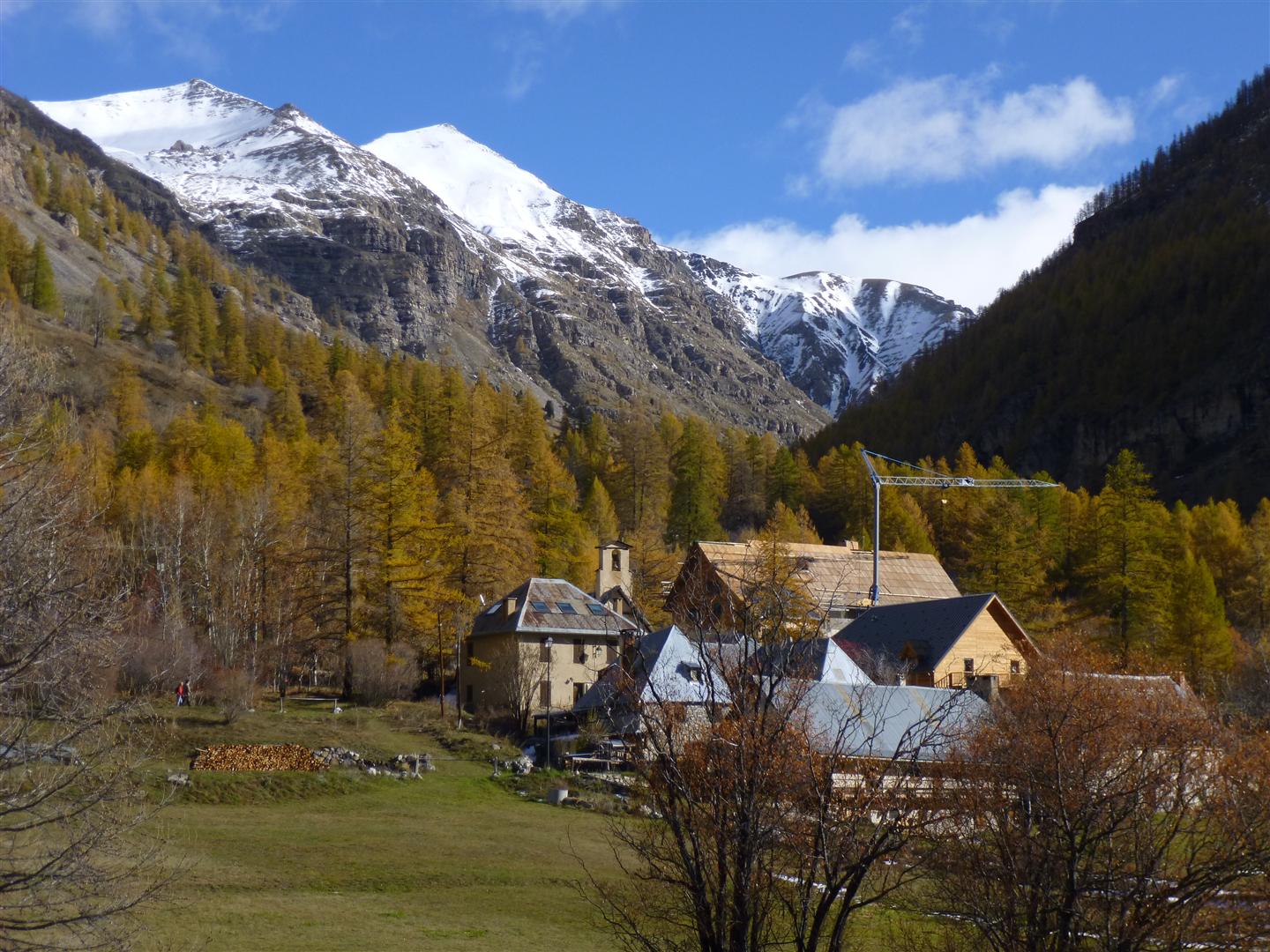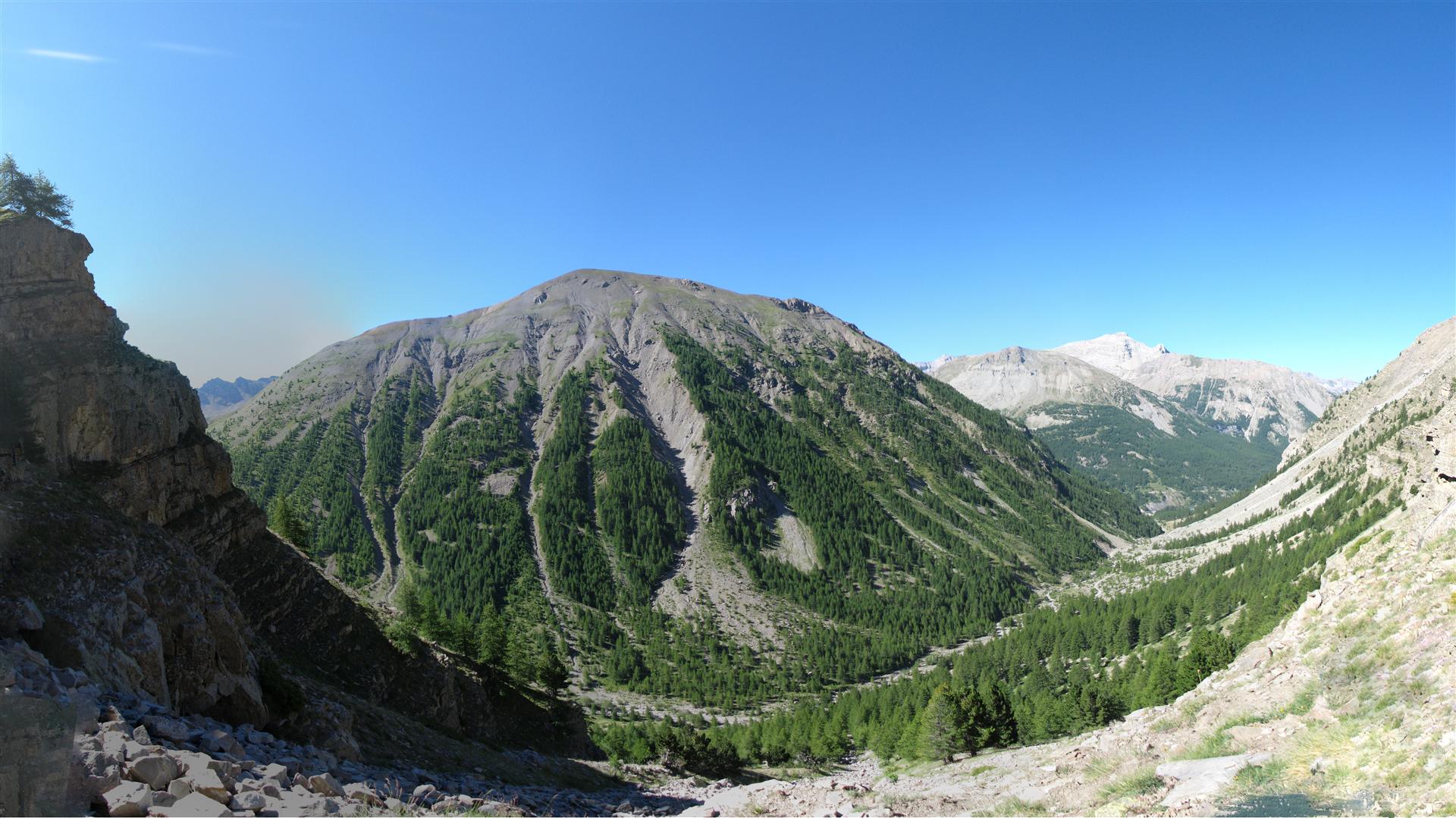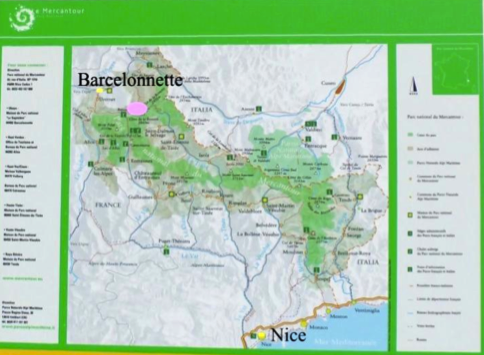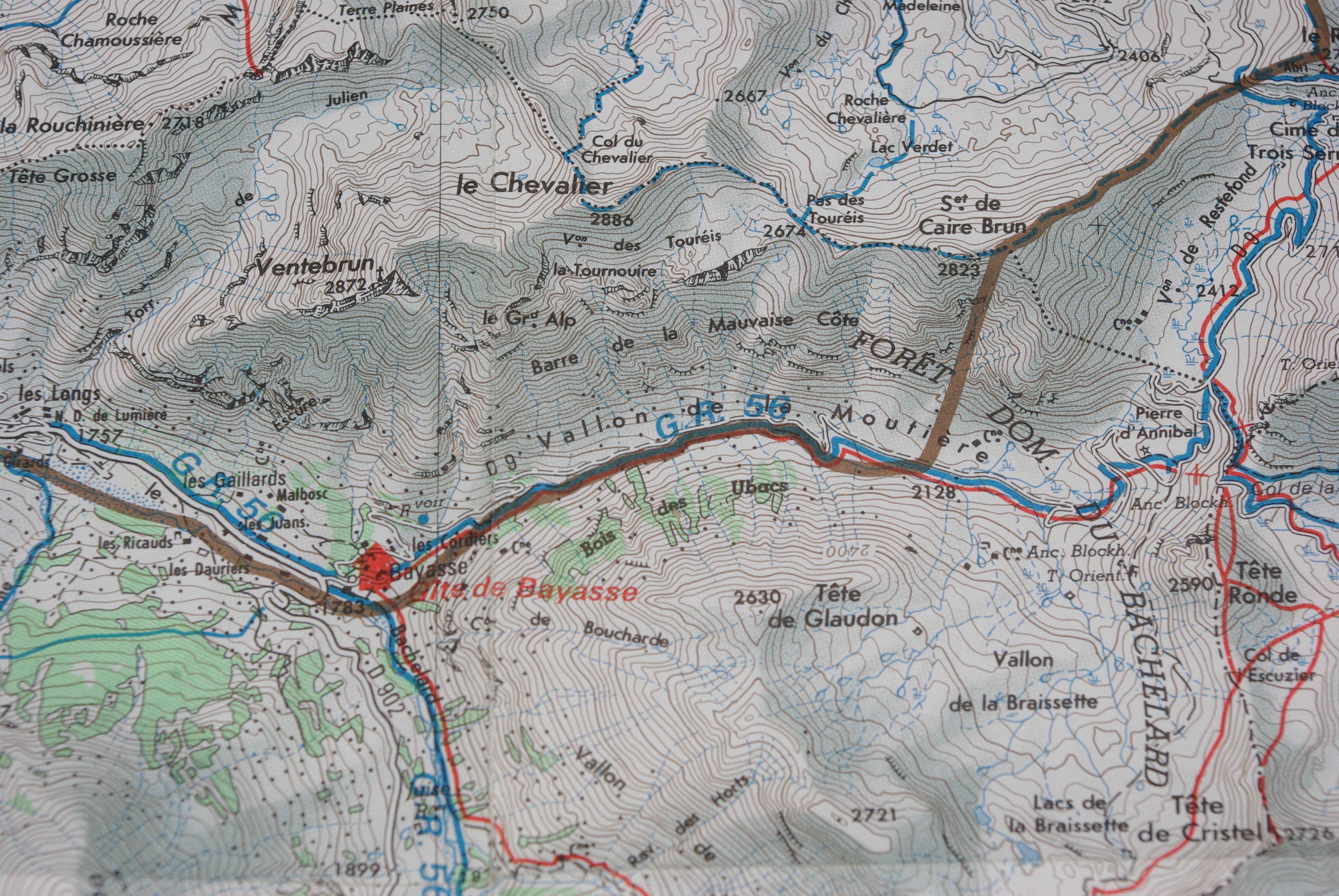The search for a site for the installation of the ground-based hypertelescope prototype began with cartographic research to identify a valley with favorable sky conditions for astronomical observations and:
- east-west oriented, so that it is possible to follow stars during their diurnal motion, and
- with U-shaped slopes, so that the natural landscape is as close as possible to the spherical form of the virtual mirror.
Located at 2000m above sea level in the Southern Alps, the valley of the Moutière meets these criteria. It benefits from a dark sky and has good transparency as well as low turbulence. In its middle part, which is east-west oriented, the slopes have a near cylindrical shape. It is sheltered from the prevailing winds and the thermal breezes are hardly noticeable, conditions that are very favorable for the installation of the suspended structure that holds the focal optics.
 |
 |
| Bayasse Village ©MR | Panoramic view of the site taken from the north side ©MR |
The installation at Ubaye of the scientific equipment necessary for the construction of the Hypertelescope is regulated by a bipartite agreement between Mercantour National Park and the Collège de France. Signed in January 2012 and renewed for four years in July 2013, this agreement authorizes the installation of LISE’s research equipment at the “heart” of the park, provided that it is removable. A third of LISE’s equipment is located in the restricted “heart” of the park, while two thirds of the installations are located in the surrounding aire d’adhésion. All devices and materials are assembled in accordance with local fauna and flora conservation rules and easily dismantled.
 |
 |
| Parc National du Mercantour ©MR | Carte IGN 1/25000 ©MR |
Conformément à cette décision, un certain nombre de mesures particulières ont été mises en œuvre par l’équipe à la fois pour assurer l’innocuité des dispositifs de l’Hypertélescope, notamment pour l’avifaune, et pour en limiter l’impact visuel.
Ainsi le câble de 800 m de long auquel est suspendu la nacelle optique n’est tendu entre les deux flancs du vallon que pendant les périodes d’observation, en présence des chercheurs. Le reste du temps il est au sol. Ce câble de couleur vive est balisé de façon à être visible par l’avifaune de jour comme de nuit.
Installés en zone cœur, les petits miroirs et leurs trépieds sont camouflés afin d’être le moins visibles possible dans le paysage.
Toutes les installations sont démontables, aucun dispositif n’est installé de façon permanente et aucun accès de type sentier n’est créé.


